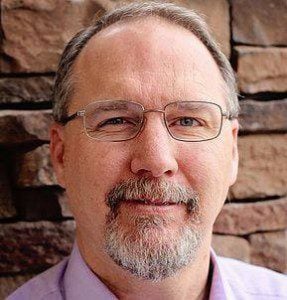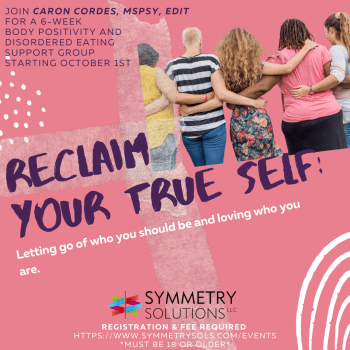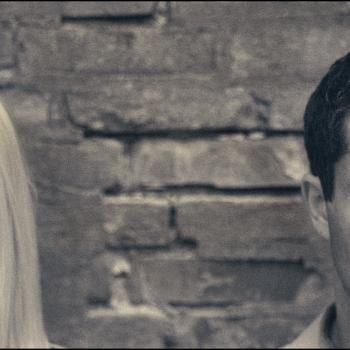
Why do faith transitions hurt so badly? Many of my non-Mormon friends don’t seem to understand why a shift in my beliefs is leaving me so depressed and broken? What is wrong with me? Is it normal to take what I feel like is a huge, painful betrayal so hard?
This is absolutely normal. It can affect everything from your identity, to your most precious relationships, to your life choices, to pretty much every aspect of your life. Especially in a religion such as ours where the daily markers are ever present. A colleague of mine has written a poetic and profound piece on the difficulty of such transitions and I’d like to share it as part of the response to your painful questions.
Today’s guest post is written by Dr. Randy K. Moss. Opinions shared on guest posts may not completely reflect the positions of the blog’s author.
Dr. Moss received his PhD from BYU in Counseling Psychology in 1996 and has been working in the behavioral health field since 1985 with emphasis on co-occurring and complex disorders. He trains and consults nationally on trauma and trauma-informed care, Feedback Informed treatment, implementation science and system transformation. He is married with four children and three grandkids, is a generational Mormon within a mixed faith marriage. He describes his faith transition in the following way: Intellectual transition of twenty years, emotional separation of ten, spiritual release of three.
Transitioning is a provocative topic. Ripe with formless prospect and embryonic yearning yet burdened with life’s bruises and clawing relationships, this stepping across (L-trans-), as it is so described, is compound. For most, it is anything other than a twinkling of an eye. More a slog through all swamps and backwaters of existence. It is excruciating. Long, grueling, personal, lonely, dangerous, dark, yet compelling — unrelentingly it beckons. The spectrum of faith transitions, to greater or different or uncategorized stages or types of faith, are comprised of the same ingredients: call to your truth, drive for real freedom, need for congruent selves, and integral grounding. Moving and growing within is always hard. Moving on and beyond herculean. Such is the meditation this early morning about my journey from a Zion of flashcard words and flannel board stories to an unpolished, unfinished world filled with souls each trying to make their way — each needing the same air — nobody exempt from the given madness that is life. This waking up as a faith statement — a truth claim borne in the metronome pacing counted in heart beats.
We all arrive into this life bearing certain expectations and mandates: a worldview. We are not blank slates, empty vessels awaiting the world. Biology and evolution have outfitted us with demands and instincts, from the first breath, providing optimum human survival and thriving. When these basic and relatively natural conditions aren’t met, this built in worldview takes a hit. It gets dented. If not restored, it sustains trauma. What does this have to do with my morning musings? Because, as a psychologist who walks with trauma, adversity and souls tattered and wounded by life, I see these dynamics at play. In a favorite book by Ronnie Janoff-Bulman called “Shattered Assumptions” she posits that children hold three basic assumptions:
- the world is safe,
- I am worthy,
- I am powerful.
When children are abused, traumatized, oppressed or subjected to distortion, these assumptions are shattered leaving the children with the fractured worldview –
- the world is scary and unsafe,
- I am weak and vulnerable, and
- I am unworthy and broken.
These are not just constructs projected out onto the world, but the building blocks by which construction of self, relationship, and life are made. Trauma is injurious, damaging the very essence of being and becoming. This shattering is also not limited to traumatic events in childhood. Oppression, hurts, injuries at any time, splinters these worldviews, leaving fixed fundamentals questioned and chaotic vigilance where composure once resided. The unraveling and halting can be abrupt, insidious or fleeting even in adulthood.

Faith Transition is such a trauma….it is a life trajectory foisted upon most by a series of externals inconsistent with the above three childhood assumptions and the ingredients of healthy being. From the onlooker, it appears voluntary. But it is not. To find the born in safety demand, the worth crowned by existence and the power granted by intelligence and intuition, seeking congruence and respectful freedom is not voluntary. It is a result of psychological disparity and irreconcilable telestial controls done in the name of celestial causes. The questioning – doubt – planned obfuscation – unsafe history discovery fractures trust. Errors, differences, normal behaviors and such were shamed with authority lorded over you grading your worthiness damaging the germ of god within. One noted that for all the might, prayer, and faithful effort one couldn’t forestall suffering, bad health, and tragedy. The illusion of misplaced righteous omnipotence and inability to subjugate the flesh as the pulpit admonishment might lift, left Lerner’s Just World View in ruin. The power endowed was illusion, the price paid into the wrong coffer. The transitioner is sometimes jettisoned and other times GPS’d away from a Faith’s long sculpted assumptions purposeful with meanings meant to safely contain and control but not release one safely. Kauffman, in his edited book “Loss of the Assumptive World” cites authors who lay out what transition from trauma means:
- loss of fixed meanings,
- scramble for different moral grounding,
- mourning for lost potentials,
- forgiving unnecessary ascetics,
- mastering positive expression of new found freedoms and clarity,
- de-compartmentalizing ourselves and the world,
- and embracing life shadowed by death without compensation or annihilation.
When one leaves an assumptive world, like a church tradition, an institution that inserts itself into the parental roles from birth and can perpetrate direct and indirect violence against the core of beings, you leave the known for the undetermined. Not just the family and friends that mask and glove around you as if you are contagious, but the very elements of how your world is constructed are disassembled.
This morning I was thinking about my elements undone and now being reassembled. I mused about the myriad of me(s), the set of selves thrust into the world that I am moved to make. The operative word is MOVED and the possessive is I. Fellow faith travelers, your original assumptive worlds are fractured, shattered. You’ve been injured, wounded, and bruised. Realization, embracing, and integrating this realization is the dangerous opportunity of radical conversion. You are not alone.
Natasha Helfer Parker, LCMFT, CST can be reached at natashaparker.org and runs an online practice, Symmetry Solutions, which focuses on helping families and individuals with faith concerns, sexuality and mental health. She hosts the Mormon Mental Health and Mormon Sex Info Podcasts, writes a regular column for Sunstone Magazine and is the current president of the Mormon Mental Health Association. She has over 20 years of experience working with primarily an LDS/Mormon clientele.












